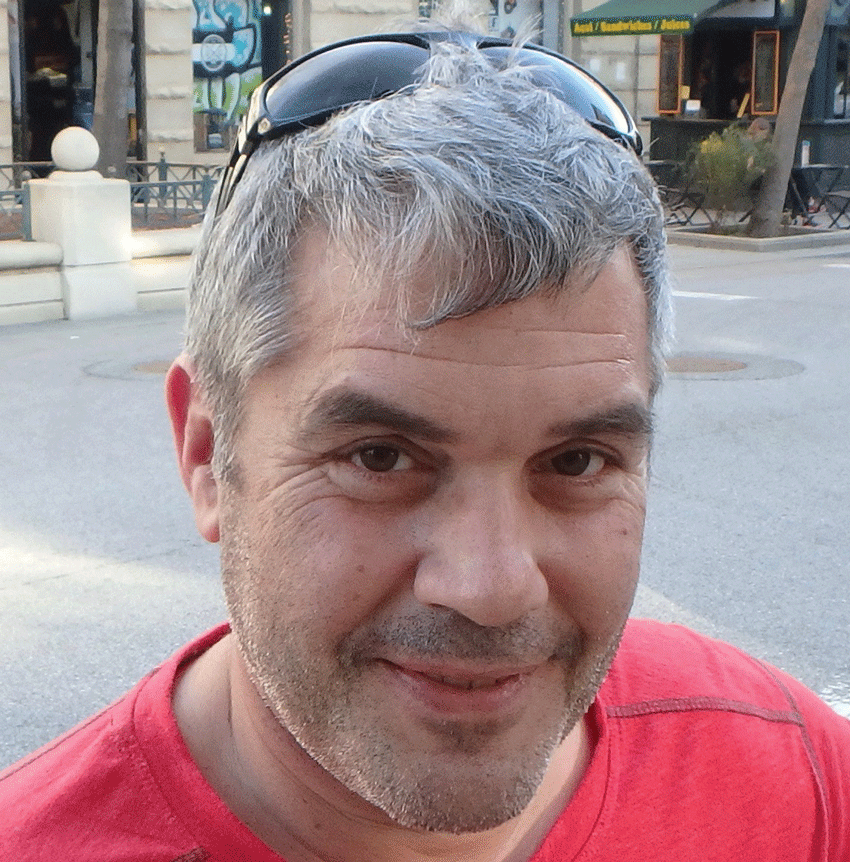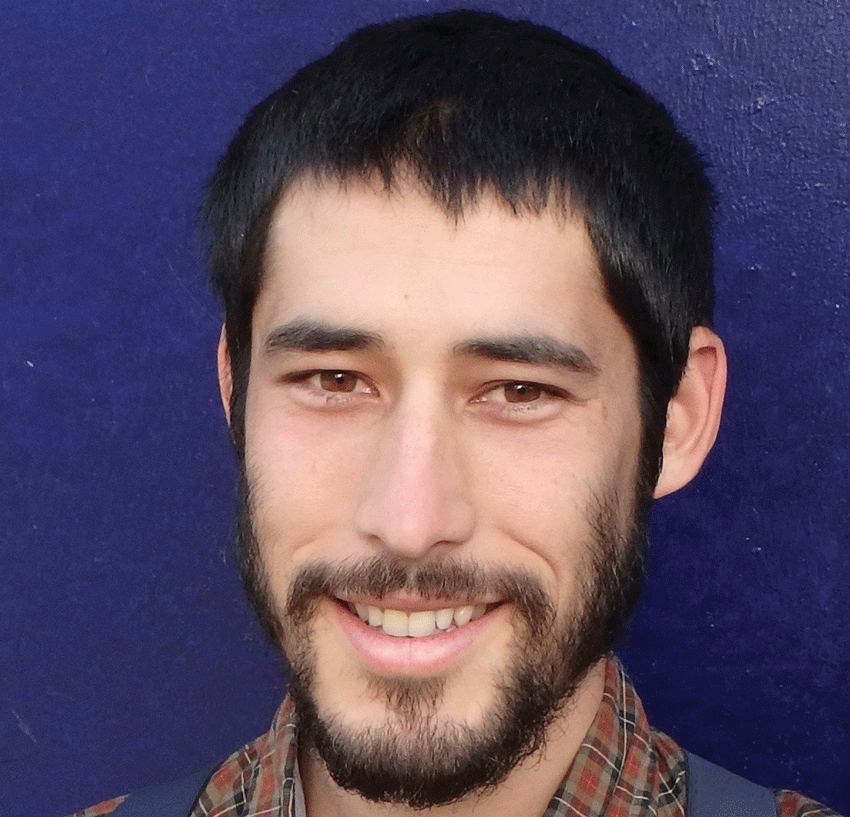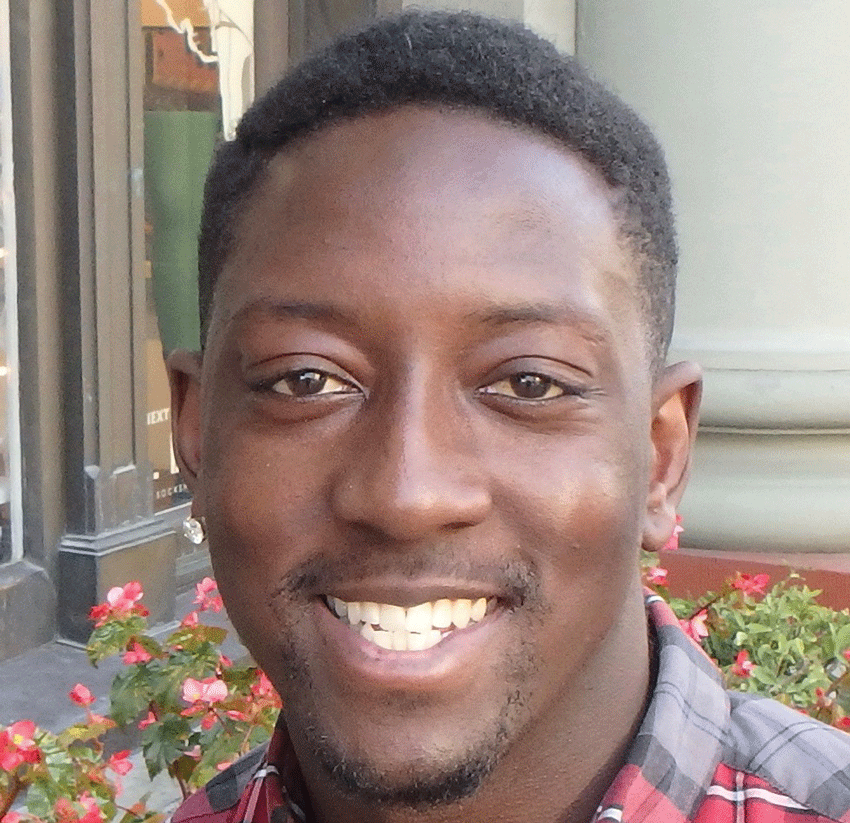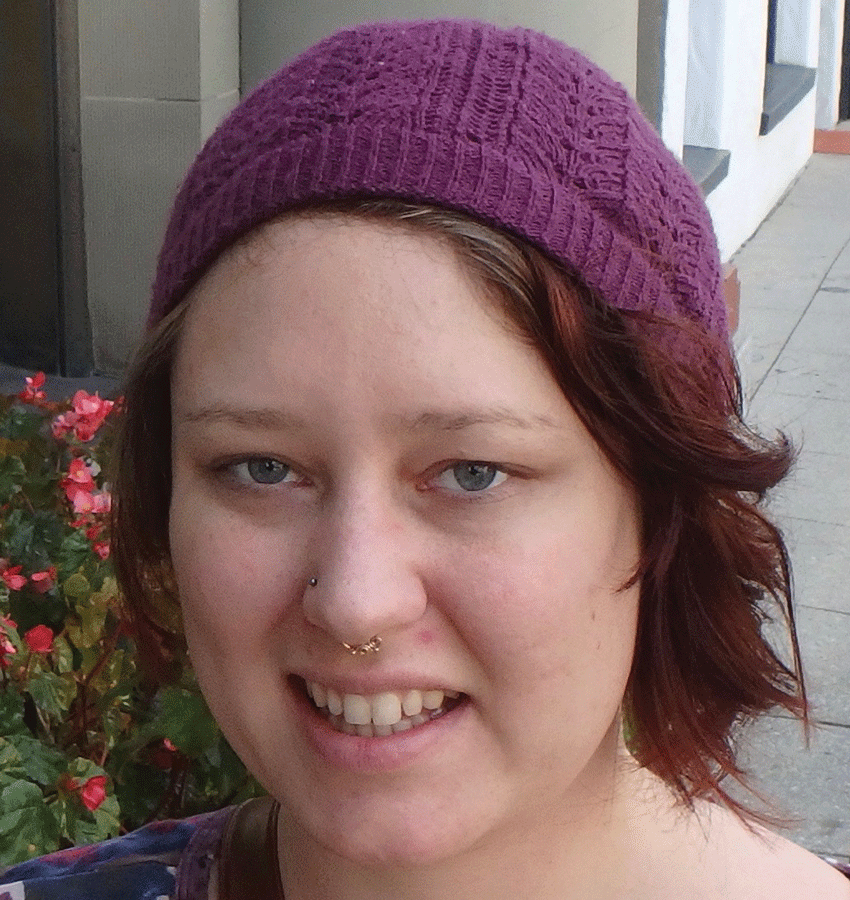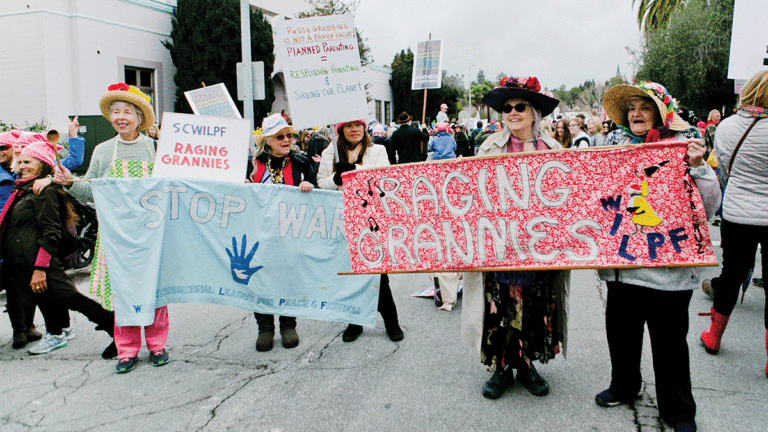Hugh McCormick was a standout UC San Diego student in 2001 when he first heard the voice in his head, and his mental collapse began. His started thinking he controlled the stock market. He thought the world revolved around him, and he was responsible for any disasters.
Then 9/11 happened. It pushed him over the edge. He drove to a Mexican desert, and talked to the wind and the birds for two weeks.
McCormick returned to Santa Cruz, his hometown, and was hospitalized. In the next four years, he was hospitalized 13 times, and shuffled between nearly every mental health center in Santa Cruz. He became a ward of the state.
He cycled through countless psychiatrists and therapists. He gained 150 pounds. He was medicated and went to group therapy. That was the extent of his treatment, he says.
“In all the facilities I was in, there was no hope. There was no mention of recovery. Recovery was not even an option,” says McCormick. “You manage your symptoms.”
Things changed when he got Section 8 housing and was able to live independently. He discovered the Santa Cruz chapter of the National Alliance on Mental Illness (NAMI), an advocacy and education group, where he still volunteers, 10 years later.
Now he’s a success story—he has a car, an apartment, a girlfriend, and a job. He’s studying journalism at Cabrillo College, and is transferring to UCSC.
For the past decade, he’s received psychiatric care from Santa Cruz County’s Health Services Agency, a publicly funded mental health program for low-income people with Medi-Cal.
His care at the county system has greatly improved in the past two years, he says.
In the past, he says, the county had a constant turnover of psychiatrists. Now it seems doctors are sticking around; for the first time, he’s had the same psychiatrist for 18 months, he says.
“It’s a far cry from what it’s been. It was ridiculous,” says McCormick. “For a while, every three months I’d get a new psychiatrist, and every other month my psychiatrist would cancel.”
McCormick isn’t alone. Change is sweeping across the county’s public and private mental health sectors, and now, reliable mental health care is accessible to more locals than ever before.
A NEW WORLD
Like much of the state and nation, Santa Cruz County has had a shortage of psychiatrists for years. In the past, residents who didn’t qualify for Medi-Cal couldn’t attend the county’s publicly funded mental health system, and had to wait six to 12 months to see one of the handful of local private-practice psychiatrists.
And because of an archaic insurance system which treats mental illnesses differently than other health care, psychiatric care hasn’t been covered, forcing most residents with private insurance to pay out of pocket.
But now, the traditional model has flipped upside-down. Instead of relying on a handful of local psychiatrists to serve the majority of the population, the lion’s share of mental health care is now administered by dozens of primary care doctors, advised by a handful of psychiatrists. Primary care doctors are treating illnesses like depression and prescribing psychiatric medications, and if they have questions, or a case is more severe, they can refer patients to therapists, psychiatric nurses, groups or a psychiatrist.
This new “integrated mental health” model has rolled out in the last three years in primary care clinics across the county: at the Palo Alto Medical Foundation clinics in Santa Cruz, Aptos and Watsonville; the Santa Cruz Women’s Health Center; Santa Cruz’s East Cliff Family Health Center; the three new Kaiser Permanente offices in Santa Cruz, Scotts Valley and Watsonville; Planned Parenthood; Watsonville’s Salud Para La Gente and the county Health Services Agency’s primary care offices. But even as unprecedented progress has been made in a short time, the Trump administration’s plan to cripple, if not outright eradicate the Affordable Care Act, means thousands may be denied access to mental health care locally.
CHANGING THE MODEL
Dr. Bruce Block, a pediatrician, helped build the new pilot program at Santa Cruz County’s Palo Alto Medical Foundation (PAMF) clinics. Block and his team were tasked with designing a financially self-sustaining system that would provide mental health services to all 950,000 patients in the PAMF system, from Burlingame to Watsonville.
A pilot program launched in 2015 in Santa Cruz County, and has served 16,000 locals so far. Around 10 therapists and psychiatric nurses were added to four local primary care clinics, so referrals could be made on the spot. And for the first time in its 64-year history in Santa Cruz, two psychiatrists were hired by the foundation to handle severe cases and offer guidance to the 76 primary care doctors.
Something remarkable happened as a result—private insurance companies changed their policies, and covered mental health care performed at PAMF primary care clinics. Medi-Cal and MediCare enrollees who are already primary care patients were also able to access mental health care at the PAMF clinics. They make up nearly half of mental health patients seen thus far.
“Honestly, if you want to look really big picture, the shift that’s happened over the last three or four years—some of this is because of Obamacare. Some of this is because people are becoming enlightened, maybe,” says Block. “It’s that people recognize that mental health care is the same as what’s going on in other parts of your body. There’s no really good reason for differentiating between your mental health care. And that, in fact, is behind a lot of the programs developing like ours: the primary place where you should be getting your mental health care is with your primary care doctor.”
The system will spread to other PAMF clinics this year.
It still has gaps, says Block. It’s designed for people with short-term mental health needs that can be addressed in less than a dozen visits. If someone needs long-term psychiatric care, they’re better served elsewhere. People in crisis or with substance abuse disorders would also fall through the cracks, he says.
But it’s a major step. Before, when primary care doctors saw depressed patients, they’d often prescribe antidepressants they weren’t that familiar with, and felt like that was the best they could do, Block says.
“That happened a lot, where we were just clearly inadequate, and the best we could do is say, ‘Contact your insurance company and see what services are available,’” Block says. “For some people, particularly low-income or Medi-Cal, we would try to refer them to the county, and the county’s resources were woefully inadequate for a long, long time.
“One of the blessings of the last few years [is that] at the exact same time we have done this, multiple other organizations and agencies have been doing the exact same thing, and that’s been a benefit to all of us.”
BREAKTHROUGHS IN PUBLIC CARE
Erik Riera heads the Santa Cruz County Health Services Agency’s mental health and substance abuse division, the county’s largest mental health provider, which serves mostly low-income Medi-Cal patients.
Since arriving in Santa Cruz in 2013 from New Hampshire, where he headed the state’s mental health program, he’s driven a complete overhaul of Santa Cruz County’s services.
The program is more visible in the community, with new initiatives such as the mobile emergency response team, which sends mental health workers to city parks, schools, and sometimes people’s homes, to respond to crisis calls.
More than 35,000 Santa Cruz County residents risk losing their health insurance if the Affordable Care Act is repealed.
“We have much less reliance on having people come in to see us, and more of an approach where we’re out in the community to see them,” says Riera.
The long list of improvements under Riera’s tenure includes adding mental health workers to staff the sheriff’s office and Santa Cruz’s and Watsonville’s police departments. Often, police are the first responders to mental health crises, and a trained clinician is equipped to handle these situations.
Also, in April the county system switched from paper to electronic patient records, a big improvement, says Riera. Now patients with complex issues can receive coordinated care from multiple doctors and clinicians, because a shared common health record is used.
In 2013, the county opened its Crisis Stabilization Program on Soquel Avenue, which evaluates people who are typically brought in by police for mental health services. Before it opened, police would bring people in mental health crises to Dominican Hospital’s emergency room, which had a longer wait and wasn’t set up to manage these crises.
More improvements are coming for the county’s mental health division. It recently received a $2.5 million grant from the Central California Alliance for Health to build an outpatient mental health center on Freedom Boulevard in Watsonville.
Riera’s team is also proposing to expand its supported housing program from 42 to 55 beds, for people with mental illnesses who need in-home support. The proposal includes health monitoring devices, which would relay a patient’s vital signs to a nurse and alert health care teams to any abnormalities.
But perhaps the most significant change—because it’s part of the turning tide that’s sweeping the region—is the integrated mental health program that the county has ramped up at its primary care clinic, on Emeline Street in Santa Cruz, since 2014.
Now the county’s integrated mental health program has 15 new full-time mental health workers, including psychiatrists, psychologists and social workers, who receive 1,000 mental health visits a month. That allows the county’s health department to serve mild and moderate mental health cases, in addition to the severe cases that it traditionally handles.
“Part of the [mental health] crisis in Santa Cruz, in my opinion as a professional, has been that there has not been a lot of emphasis in growing our workforce and having viable positions for licensed clinical social workers.” — Holly Hughes, Director of Behavioral Health for the Santa Cruz Community Health Centers
“If a [primary care] physician has a patient in their exam room and they want a consultation [from a psychiatrist], those patients don’t have to wait,” says Riera. “We will see them immediately with the physician. So we have the capacity of bringing the psychiatrist and the therapist into the exam room with the patient and the physician, and to work out a plan with them. We call it a warm hand-off. So we can see them same day, same time.”
Primary care doctors can now refer patients to psychiatrists, and vice versa, says Riera.
“So you have that kind of seamless system for our patients, which I think is really important,” says Riera. “We don’t have to [send them elsewhere]. We can keep them within the system and they can also keep their same provider as well. We can add or subtract services, depending on the person’s need.”
THE TRUMP EFFECT
More Santa Cruz County residents have access to mental health services than ever before, partly due to an improved system, but largely because more residents have health insurance. The Affordable Care Act expanded Medi-Cal to low-income people, beyond just disabled people, and now 70,000 Santa Cruz County residents receive Medi-Cal. That’s one-quarter of the county’s population.
How that will change under Donald Trump’s presidency is yet to be determined, with Trump’s promise to repeal the Affordable Care Act.
Since Trump’s win, Santa Cruz doctor Larry deGhetaldi has been quietly meeting with Santa Cruz County Supervisors and others to discuss the local repercussions of a possible repeal of the Affordable Care Act. DeGhetaldi, who is president of the PAMF’s Santa Cruz division, says the outlook is “bleak” and the community must respond collaboratively.
More than 35,000 Santa Cruz County residents risk losing their health insurance if the Affordable Care Act is repealed, says deGhetaldi. That includes residents with Covered California insurance, some with Medi-Cal or MediCare, undocumented children, low-income seniors and people with disabilities who have both MediCare and Medi-Cal.
“This is going to be a tough struggle. It’s not going to happen overnight, but clearly we have to watch,” says deGhetaldi. “The greatest concern here is medical access for the 70,000 patients [in Santa Cruz County who are insured by Medi-Cal], which of those patients will lose access to healthcare.”
“Santa Clara and Monterey counties might weather this better than our county,” he added in an email. “We lack a county hospital to backfill the [people who would lose their insurance]. People will suffer.”
Holly Hughes, director of behavioral health for the Santa Cruz Community Health Centers, is also worried.
Her clinics, the Santa Cruz Women’s Health Center and the East Cliff Family Health Center, serve 11,000 low-income patients, who are usually on Medi-Cal or are uninsured. These clinics, like Planned Parenthood and Watsonville’s Salud Para La Gente, receive federal reimbursements for each visit.
Hughes says that when the Affordable Care Act floodgates opened in 2014, adding 21,000 Santa Cruz County residents to Medi-Cal that year, her clinics changed their models to ensure that these new patients could access mental health care.
The first change was increasing the number of mental health providers within the primary care clinics, from less than one full-time mental health provider, to a ratio of one mental health provider for every two primary care doctors. These include therapists and social workers, to treat problems such as unstable housing or social isolation.
“All of those problem areas, now there will be a direct intervention, not from a medical provider, but from someone for whom that is their specialty, in real time,” Hughes says. “We step into the exam room and we address those problems right then and there.”
Santa Cruz Community Health Centers also hired its first psychiatrist last year, who advises the staff of primary care doctors.
The key to the model’s success is the way that community health clinics are funded—for every visit, regardless of whether the patient sees a doctor, a therapist or a social worker, the clinic is reimbursed the same amount.
“The behavioral health providers cover their salaries in two shifts per week, and so all the rest is revenue,” says Hughes. “[Social workers] are contributing more revenue to the centers than the medical providers are.”
That means that adding more mental health providers not only helps fill a gap in the community, but also creates a financially solvent model. Hughes, who sees patients as a licensed clinical social worker in addition to her director role, says her caseload has quadrupled since 2012, and the same goes for the other mental health providers at her clinics.
“I don’t think a lot of people understand that this is happening,” says Hughes. “And part of the [mental health] crisis in Santa Cruz, in my opinion as a professional, has been that there has not been a lot of emphasis in growing our workforce and having viable positions for licensed clinical social workers. Because if you look at San Francisco or San Jose or Los Angeles or San Diego, there are far more licensed clinical social worker positions.”
If the Affordable Care Act is repealed as promised under the Trump administration, those newly insured Medi-Cal residents stand to lose not only their coverage, but their access to the county’s new and improved mental health system, says Hughes.
“There’s a blind spot around the people who were really, really suffering and struggling, who did impact all of us when it comes to cost,” says Hughes. “So it’s not just my values that say that people deserve access to health care, it’s also the even more conservatively-minded folks who care about cost.
“This was a really big win in terms of that—saving costs. People aren’t going to the ER for their [mental health] needs. They’re now being better served in the primary care setting.”
Riera says that without the Affordable Care Act, the county mental health division will be unable to care for the residents who lose Medi-Cal coverage. The way the funding model works now, the federal government covers 98 percent of the costs to care for the people who are newly-insured by Medi-Cal, those who are low-income, with mild or moderate illnesses. The county only covers 2 percent of the cost.
“If the Affordable Care Act is repealed, unless people become eligible for Medi-Cal, they’ll lose their insurance completely,” says Riera. “And it doesn’t change the fact that they have significant health issues or mental health issues. But they’re likely not to be receiving services anymore because the county doesn’t have funding to serve [them].”






